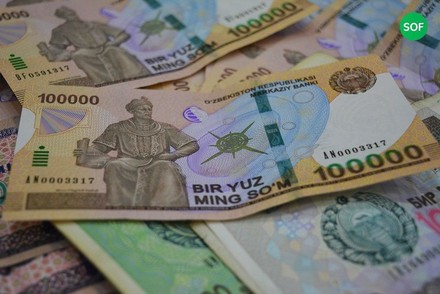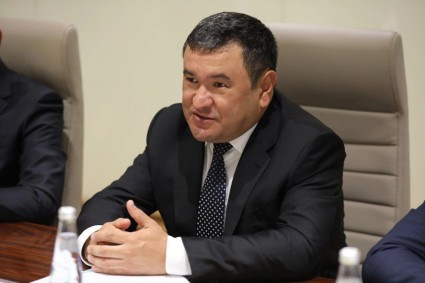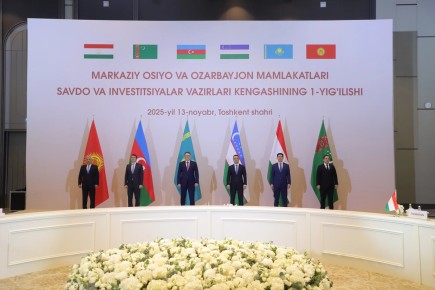The Ministry of Economy and Finance has published a bill on the state budget for 2026 and target indicators in its Budget Message for 2026-2028.
In 2026, consolidated budget revenues are expected to top 515.3 trillion soums, and expenditures to 566.9 trillion soums. Budget revenues are forecast to stand at 368.9 trillion soums, and expenditures at 328.8 trillion soums (excluding interbudgetary transfers). The deficit ceiling is 59.9 trillion soums, or 3% of GDP. The deficit is planned to be covered by external and internal debt, proceeds from the privatization of state assets, and other sources.
The consolidated budget deficit is expected to reach 3% of GDP in 2027 and 2028.
In 2026, gross domestic product is expected to surpass 1 quadrillion 976 trillion soums. GDP growth is projected to be 6.6% in 2026, 6.8% in 2027, and 6.9% in 2028.
Inflation is planned to be reduced to 7% next year, to 5-6% in 2027, and to 5% in 2028.
External debt
This year, the external borrowing limit was $5.5 billion, but in 2026 this figure will be reduced to $5 billion. $2.5 billion of this amount will be directed to supporting the state budget, and $2.5 billion to financing investment projects. It is also planned to issue 30 trillion soums of government securities on behalf of Uzbekistan next year. 49.2 trillion soums will be spent on repaying the state debt. The limited amount of new PPP projects is $6.5 billion.
Subsidies in the energy sector will continue
The total value of subsidies contributed from the state budget in 2026 will reach 28.3 trillion soums (30.4 trillion soums in 2025). This makes 7% of total budget expenditures.
The size of subsidies contributed from the state budget to individual sectors is as follows:
- 5.9 trillion soums (7 trillion soums) to cover the difference in gas purchases and sales;
- 4.6 trillion soums to non-state kindergartens (3.8 trillion soums in 2025);
- 3.8 trillion soums (4.8 trillion soums) to maintain low tariffs for heat supply;
- 2.7 trillion soums (2.5 trillion soums) for individuals to purchase housing;
- 2 trillion soums (4.5 trillion soums) for agriculture;
- 1.9 trillion soums for the gross contract for buses (1.6 trillion soums last year);
- 750 billion soums for geological exploration (820 billion soums);
- 700 billion soums for energy efficiency incentives (100 billion soums);
- 700 billion soums for railways (721 billion soums);
Despite the increase in prices for both gas and electricity, subsidies for the energy sector will continue next year. In particular, half of the total subsidies will be directed to the energy and transport sectors.
Tax policies
The Ministry of Economy and Finance also presented the main axes of tax policies for 2025. According to it, the main tax rates will remain unchanged.
- profit tax - 15%;
- value added tax (VAT) - 12%;
- personal income tax - 12%;
- social tax - 12% (for budget-financed organizations - 25%);
- turnover tax - 4%;
- property tax of legal entities - 1.5%.
Also, the land tax rate for agricultural land will remain at 0.95% of the normative value of the land.
A progressive scale per 100 ml for sugary drinks shall be as follows:
- up to 5 grams - 500 soums per liter (current rate);
- from 5 grams to 10 grams - 515 soums per liter;
- More than 10 grams - 535 soums per liter.
The tariff for drinks with sweeteners other than sugar will be 500 soums per liter. A tax of 2,150 soums (currently 2000 soums) per liter of energy drinks shall be charged.
The Message has also proposed to raise from April 1, 2026 the excise tax rate for the production of oil goods and their sale to end consumers by 7%, while keeping the current rates for polyethylene granules (10%) and natural gas (12%).
Tax rates for the use of land, property, water resources, as well as the rates for the use of subsoil are expected to increase from January 1, 2026, and the rates of minimum rental payments applied for taxation purposes for individuals and legal entities leasing property by 7%.












